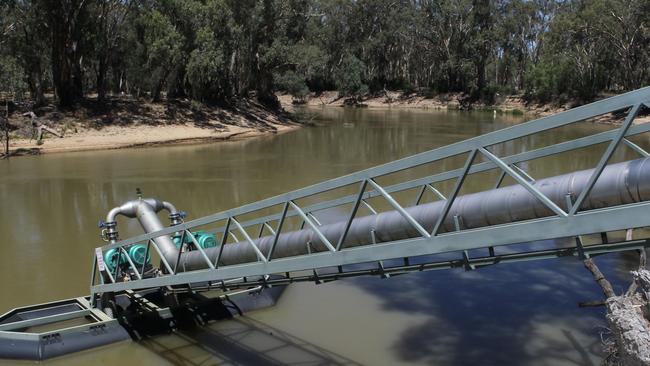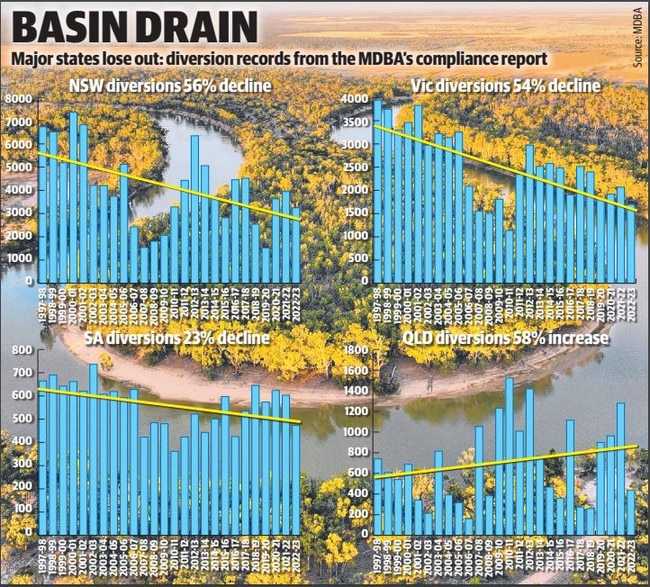NSW and Victorian irrigators cut water use in half: Yet buybacks continue
NSW and Victorian irrigators have cut their water use in half over the past 30 years, to below the Murray Darling Basin Plan targets.

NSW and Victorian irrigators’ diversions from the Murray Darling Basin’s rivers have almost halved since 1997-98, as dairy and rice production declined amid federal government water buyouts.
Applying trend lines to diversion records from the MDBA’s cap compliance reports shows that while Victorian and NSW water usage declined by about 50 per cent, South Australian irrigators diversions fell by just 22 per cent, while Queensland rose by roughly 58 per cent.

NSW Irrigators Council chief executive Claire Miller said the trends “illustrate what we already knew, that rice in southern NSW and dairy in northern Victoria are the hardest hit by water recovery for the environment”.
“The Government knows the Basin Plan hurts some regions more than others, yet it continues to target them for even more buybacks.
“More water recovery not necessary, and will not fix what is still making the rivers sick, such as European carp wrecking water quality and habitat. Perhaps the Government might learn that, too late for these communities.”
The MDB Authority responded to questions on the decline by arguing there were risks in using simple linear regression (trend lines) to analyse changes in diversions, given the complexity and impacts of the 1994 Basin cap, the Millennium drought, federal water buyouts and introduction of the Basin plan all had an impact.
However while former National Irrigators Council chair and Moulamein irrigator Jeremy Morton agreed the cap, introduction of carry-over rules, water market reforms and shift of more water to permanent planting all had an impact, at the end of the day “diversions are now less than the SDLs (Sustainable Diversion Limits of the Basin Plan)”.
“Yet here we have a (federal) government recovering more water, which isn’t necessary,” Mr Morton said.
“For all the hand wringing about how much water we’re using to feed and clothe the world, we’re using half of what we were 30 years ago. Imagine what we could produce if we still had access to that water.”
Opposition water spokeswoman Perin Davey said “environmental water reform started in earnest in the 1990s and continue to this day and what that has led to is multiple water recovery programs and changes in irrigator behaviour so water use has been trending down.
“These graphs show farmers and Basin communities have done all that has been asked of them to reduce water use and improve efficiencies but there comes a point where they cannot go any further.
“But instead of thanking these communities, the Labor Government just wants more.”




